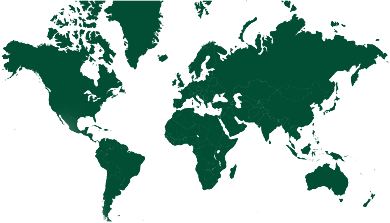Software
2024 • DTU - Technical University of Denmark EASETECH – Environmental Assessment System for Environmental Technologies
EASETECH is an advanced life cycle assessment (LCA) software developed to evaluate environmental technologies and processes with a specific focus on material flows, resource recovery, and emissions. It is designed to model complex waste management and treatment systems while allowing flexibility and precision in analyzing environmental impacts. The tool supports decision-making for researchers, consultants, authorities, and technology developers by providing insights into optimal waste treatment options and environmental sustainability. EASETECH has been applied globally across sectors, including wastewater treatment, sludge management, and renewable energy technologies.
Recovered Materials & Products
Energy
Electricity
Heat
Biogas
Nutrients
Fertilizer
Compost
Waste Streams
Wastewater
Organic solid waste
Food processing by-products
Food waste
Solid waste
Confirmed countries
Germany


What is this tool intended for?
EASETECH is designed to conduct environmental life cycle assessments (LCAs) for environmental technologies, particularly in waste management, wastewater treatment, and renewable energy systems. Its primary aim is to model material flows, evaluate environmental impacts, and inform resource recovery strategies within circular economy frameworks.
How does this tool work?
EASETECH operates as a desktop-based LCA software built on a dynamic framework. Users define specific scenarios by inputting data related to waste material composition, treatment processes, and external processes like energy production. EASETECH calculates environmental burdens using life cycle inventory (LCI) data and produces results in five layers, including material flow compositions, characterized impacts, and normalized impacts. Advanced features like Monte Carlo simulations and discernibility analyses allow users to evaluate uncertainties and identify critical parameters influencing results.
Who might use this tool and with which types of stakeholders?
The tool is primarily used by researchers, consultants, regulatory authorities, and technology developers in sectors focused on waste management, wastewater treatment, and renewable energy. It is also suitable for environmental agencies and municipal planners aiming to evaluate and optimize resource recovery processes.
What stages of a process can this tool support?
EASETECH supports multiple stages of waste and resource recovery system planning, including preliminary design, technology evaluation, scenario modelling, impact assessment, and decision support for selecting optimal strategies based on environmental and economic criteria.
What skills, capabilities, and resources are required to use this tool?
To use EASETECH effectively, users require a strong understanding of life cycle assessment principles, environmental modelling, and material flow analysis. Training is mandatory for accessing and operating the software. Users must also provide high-quality input data to model specific waste systems accurately. A suitable desktop environment and access to relevant datasets are essential.
Where can this tool be used?
EASETECH can be applied globally across urban and rural contexts, particularly in settings requiring complex evaluations of waste management and wastewater treatment systems. It has been used in diverse geographical regions, including North America, South America, Asia, and Sub-Saharan Africa, where sustainable waste management practices and resource recovery are priorities.
Case examples of where this tool has been used
EASETECH has been used in several cases in countries around the world. A selection of publications describing various cases in which the tool has been used is available here: http://www.easetech.dk/publications
EASETECH has been widely used to evaluate environmental and economic aspects of wastewater management and resource recovery systems across various countries. For instance, in China, the tool was applied to assess the climate change impacts of conventional sewage sludge treatment and disposal pathways, including anaerobic digestion, composting, and incineration, identifying emissions hotspots and opportunities for reducing greenhouse gas emissions. In Denmark, EASETECH supported a study on sludge pyrolysis technologies within Water Resource Recovery Facilities (WRRFs), highlighting the potential for biochar production, reduced sludge volumes, and improved carbon footprint.
Additionally, the tool was used in Uganda to explore sustainable agri-food waste valorization systems, where standalone anaerobic digestion (AD) and integrated hydrothermal carbonization-AD systems were compared for energy recovery and environmental performance. In China, EASETECH was further applied to analyze emerging food waste valorization technologies, such as hydrolysis and refuse-derived fuel (RDF) production, demonstrating their superior climate benefits over traditional methods. Finally, in Denmark, the tool addressed challenges in carbon footprint evaluations of advanced wastewater treatment plants, focusing on nutrient and energy recovery processes while emphasizing the importance of accurate carbon accounting methodologies.
Get the Tool
EASETECH is available to trained users through a licensing arrangement. There's a fee for commercial users, but it's free for academic users. While the software is not open source, training and support are provided for users to fully leverage its capabilities.
http://www.easetech.dk/model-description
Learn more
Official website about the EASETECH tool
http://www.easetech.dk/
Scientific paper with a detailed description of the EASETECH tool:
Clavreul, J., Baumeister, H., Christensen, T.H., Damgaard, A., 2014. An environmental assessment system for environmental technologies. Environmental Modelling & Software 60, 18–30.
https://doi.org/10.1016/j.envsoft.2014.06.007
Technologies
Composting
Anaerobic digestion
Material recovery facilities
Incineration
Themes
Design
GHG emissions
Life cycle assessment